Unsupported Browser
You are seeing this message because you are using the Internet Explorer web browser. Internet Explorer has not been updated with new features since the release of Windows 10 in July 2015, so it doesn't support the modern standards that our website uses. We recommend switching to Google Chrome, Mozilla Firefox, or Microsoft Edge, all of which our website is tested with.
Methods of Application
Aromatherapy Massage,Body, and Facial Oils
Aromatherapy massage, body and facial oils use vegetable and/or infused oils as their core base. They can be made up of one or several base oils, depending upon the problem you are addressing. You can also add essential oils to aromatherapy massage, body, and facial oils.
Cold pressed vegetable oils are used in aromatherapy practice. Examples include sunflower (Helianthius annuus), sweet almond (Prunis dulcis), jojoba (Simmondsia chinensis) and grapeseed (Vitis vinifera).
Examples of infused oils include St. John’s wort (Hypericum perforatum) and calendula (Calendula officinalis).
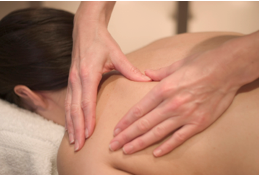
RECOMMENDED DILUTION RATES FOR AROMATHERAPY MASSAGE AND BODY OILS
Dilution rates are the amount of essential oils per one ounce of base oil.
| DILUTION RATE (%) | ADULTS | INFANTS/CHILDREN |
|---|---|---|
| 0.5-1 | - | 3-6 drops |
| 2.5 | 15 drops | - |
| 3 | 20 drops | - |
| 5 | 30 drops | - |
| 10 | 60 drops | - |
RECOMMENDED DILUTION RATES FOR AROMATHERAPY FACIAL OILS (ADULT USE ONLY)
| DILUTION RATE (%) | SENSITIVE SKIN | NORMAL SKIN |
|---|---|---|
| 0.5-1 | 3 - 6 drops | - |
| 1 - 2.5 | - | 6-15 drops |
You can use aromatherapy massage, body, and facial oils for:
- Anxiety
- Depression
- Stress
- Headaches
- Migraines
- Chronic pain
- Acute pain
- Muscular and joint pain
- Inflammation
- Rheumatoid arthritis
- Relaxation
- Pregnancy massage*
- Childbirth massage*
- Sprains
- Sport injuries
- Skin disorders
- And many other problems!
*consult an aromatherapy massage practitioner qualified in this specialist area of massage for further advice.
Aromatherapy Creams and Lotions
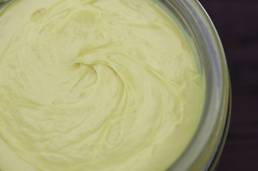
Aromatherapy creams and lotions can be used for either your face or your body. You can purchase an unscented white lotion or cream base from a cosmetic supplier and then add your own blend of essential oils to it. Alternatively, you can learn to make your own cream or lotion base first, and then add your blend of essential oils to it.
RECOMMENDED DILUTION RATES FOR AROMATHERAPY CREAMS AND LOTIONS
Dilution rates are the amount of essential oils per one ounce of base oil.
| DILUTION RATE (%) | SENSITIVE SKIN/INFANTS AND CHILDREN | NORMAL SKIN |
| 0.5 - 1 | 3 - 6 drops | - |
| 1 - 2.5 | - | 6 - 15 drops |
| 3 | - | 20 drops |
| 5 | - | 30 drops |
| 10 | - | 60 drops |
You can use aromatherapy creams and lotions for:
- Skin care
- Skin issues such as eczema, dermatitis, psoriasis
- Wound healing
- Scar reduction and appearance
- Toning the skin
- Improving circulation
- Soften and soothe the skin
- Emotional issues
- Balance sebum production
- Skin aging
- Detoxification of the skin
- Skin hydration.
Aromatherapy Baths
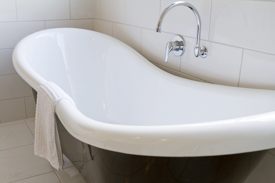
You can add aromatherapy, in the form of essential oils, vegetable oils, and salts to the bath, if you use a suitable dispersing agent. A dispersing agent, such as a solubol, coconut emulsifier, or bath gel, helps to ensure that the essential oils, vegetable oils, and bath salts are properly diluted in the bath water.
In general, you can use approximately 2 -12 drops of an essential oil to one teaspoon of the dispersing agent, depending upon the essential oil and/or the dispersing agent. Note that vegetable oils will make the bath tub slippery.
Aromatherapy baths are useful for:
- Stress and anxiety relief
- Helping with chronic pain
- Helping with muscle and joint pain
- Improving stiffness
- Detoxifying
- Stimulating circulation (including lymph)
- Skin health
- Fatigue and exhaustion.
Aromatherapy Steam Inhalation
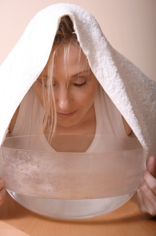
Aromatherapy steam inhalation is particularly useful for colds, flu, sinus infections, and congestion in the nose and chest. It may also help with respiratory problems such as asthma and bronchitis.
Adult Use: To make an aromatherapy steam inhalation:
- Add up to 6 drops of essential oil (adult use) to each ounce of boiling water.
- Fill up a bowl with the required amount of water.
- Place the bowl on a table and sit down at the table.
- Cover your head with a towel.
- Lean over the bowl and breathe through your nose.
- Make sure to keep your eyes closed.
- Discontinue immediately if irritation occurs.
Suggested essential oils for adult use for aromatherapy steam inhalation include blue gum eucalyptus (Eucalyptus globulus), tea tree (Melaleuca alternifolia), lemon (Citrus x limon), and thyme ct. linalool (Thymus vulgaris ct. linalool).
For Use with Children (5 years and up): Adult supervision recommended at all times. To make an aromatherapy steam inhalation:
- Add 2- 3 drops of essential oil to each ounce of boiling water.
- Fill up a bowl with the required amount of water.
- Place the bowl on a table and sit your child down at the table.
- Cover their head with a towel.
- Help your child to lean over the bowl and instruct them to breathe through their nose.
- Make sure your child keeps their eyes closed.
- Discontinue immediately if irritation occurs.
Suggested essential oils for adult use for aromatherapy steam inhalation include rosalina (Melaleuca ericifolia), lemon (Citrus x limon), and sweet orange (Citrus sinensis).
Aromatherapy Sprays
Aromatherapy sprays are made up of essential oils, water, and a dispersant such as a solubol. The solubol ensures that the essential oils are diluted properly in the water. Use aromatherapy sprays as body and facial sprays, to energize or clear a space, as a room spray, in massage practice, or simply to cleanse the air. They can be used for both emotional and physical problems.
Note that hydrosols are different to aromatherapy sprays. Hydrosols are the complete plant distillate extracted directly from the plant. An aromatherapy spray is a combination of essential oils added to [distilled] water.
Add up to 15 drops of an essential oil blend to one ounce of [distilled] water. If you’re using the aromatherapy spray on your face, use half of this amount.
Aromatherapy Diffusion
There are many different types of aromatherapy diffusers. Check the aromatherapy manufacturer’s guidelines for instructions for use, before adding an essential oil blend.
Use an aromatherapy diffuser for:
- Stress and anxiety
- Setting the mood (romantic, seasonal etc.)
- Insomnia
- Purify the air
- Increase motivation
- Reduce fatigue
- Increase mental alertness
- Relaxation
The essential oil blend that you use will dictate different outcomes.
Always make sure that you are aware of your surroundings before setting up an aromatherapy diffuser, particularly in a public or shared space. Pay attention to:
- Chemical sensitivities of others
- Allergies of others
- Pregnant women
- Babies and young children
- Pets
- Seniors
- People with medical conditions.
Different types of inhalation
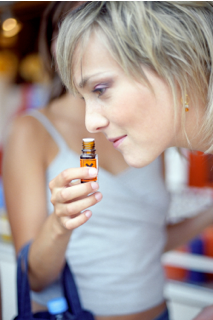
Direct inhalation
This is one of the simplest ways of using aromatherapy – inhaling an essential oil (or essential oil blend) direct from a tissue, cotton-ball, or direct from the bottle. This is a good method to use in situations of shock, grief, anxiety, panic attacks, and respiratory conditions that require immediate attention.
| Method of Application | Amount of Essential Oils | Instructions for Use |
|---|---|---|
| Direct Inhalation (Tissue or Cotton-ball) | 2 – 4 drops | Hold tissue/cotton-ball in palms of hand and take a couple of deep breaths through the nose. Alternatively, take a few “bunny-sniffs.” Use as needed. |
|
Direct Inhalation (Bottle) |
3 – 5 drops | Add total number of drops of the essential oil blend to a small bottle. Cap and shake. Uncap and waft gently under nose. Inhale deeply once or twice, or sniff gently. Use as needed. |
Direct palm inhalation: Direct palm inhalation is the act of placing the essential oil blend directly onto the palm of your hands and inhaling it. Again, this is a great technique for the symptoms of acute emotional distress. It can encourage you to relax, breathe, and uplift or calm.
Safety Note: Only gentle essential oils such as lavender (Lavandula angustifolia) should be used for direct palm application. Avoid “hot” or caustic essential oils for this method of application.
Inhaler tubes: Inhaler tubes are a popular method of aromatherapy use for on-the-go. They are portable, discreet, and easy-to-use. Inhaler tubes can be used for respiratory problems, emotional issues, panic attacks, anxiety, shock, grief, and colds.
To make an aromatherapy inhaler tube:
- Add up to 20 drops of your chosen essential oil blend to a small glass beaker.
- Stir.
- Place the cotton insert/pad from the inhaler tube in the beaker.
- Make sure that it soaks up all of the blend.
- Carefully remove the cotton insert/pad (using tweezers if necessary) from the glass beaker and insert into the inhaler tube.
- Secure the bottom fitting and cap.
- Uncap the inhaler, and take a couple of deep breaths, or small sniffs, when you need to use the blend.
Stay Informed
Not a member yet but would like to stay up to date with NAHA? Considering joining but would like to explore the National Association for Holistic Aromatherapy more? Join our e-newsletter today and stay in touch.
Get in Touch
Our office hours are 9 am to 5 pm Mountain time, Monday - Friday.
National Association for Holistic Aromatherapy
6000 S. 5th AvePocatello, ID 83204
208-232-4911
Browse Our Content
Search the Site
Let's Get Social
Copyright © 2024 National Association for Holistic Aromatherapy. All rights reserved.
The National Association for Holistic Aromatherapy is a 501(c)3 non-profit association.
All material provided on this website is provided for informational or educational purposes only, and is not intended as a substitute for the advice provided by your healthcare professional or physician.